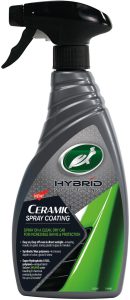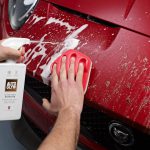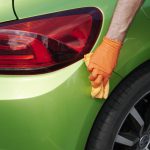For many of us, there’s not much better than a freshly cleaned car. But to finish off your detail, a layer of car wax can really make all the difference.
What does car wax do?
An extra layer of wax or sealant covers not only adds some extra shine but also protects your newly cleaned paint from dirt and grime, for a longer-lasting gloss.
In this blog, we’ll walk you through the best tools, techniques, and products for achieving a professional-quality wax.
What’s the best car wax?
The right product for you will depend on your vehicle, and the results you want: a spray-on liquid wax will be quicker to apply but offer less protection, while a paste wax will take longer but give you more protection.
The Autoglym Ultra High-Definition Wax Kit has everything you need for a flawless finish. With a tub of ultra-definition wax, a dedicated wax applicator, and a microfibre buffing towel, you’ll be able to achieve that showroom-ready shine in no time.
A ceramic wax is a great choice for that extra protection – it contains SiO2 which gives your paintwork a hydrophobic quality. That means that water beads on the surface and simply runs off, meaning it’s harder for dirt and grime to stick. It also looks really cool! Choices such as Meguiar’s Hybrid Ceramic Wax or Turtle Wax Hybrid Solutions Ceramic Spray Coating will offer you up to 12 months’ protection while also being quick and easy to apply.

Another thing to look out for is products that contain Carnauba wax – this Brazilian wax is, for many keen car cleaners, the top choice for gloss, protection, and depth of colour.
Whatever product you choose, the way you apply it will make a big difference to your overall results. Even the best products can be held back by incorrect application, so we’ll explain the best ways to use your chosen wax.
How to apply car wax
You should wax your car as the final step in your clean routine, once you’ve washed and treated the paintwork.
Use either a microfibre cloth or a dedicated wax applicator to apply your chosen wax, putting the product onto the cloth instead of straight onto your paintwork. Start spreading the wax in circular motions with medium pressure, making sure you cover every inch of the bodywork.
Once you’ve covered the area, leave it for 5-10 minutes – this gives the wax time to work. Once you start to see a dull haze over your paintwork, it’s time to buff the wax off.
Using a clean microfibre towel, buff in circular motions with medium pressure to remove the excess wax. For that extra shine, buff over the body a second time with the clean side of the microfibre towel.
Car waxing tips
For the best results, here are a few extra tips:
- Don’t use the same microfibre towels for cleaning, polishing, and waxing.
- Use high-quality microfibre towels – you may think that the quality of the wax itself will do all the hard work, but invest in quality tools too and you’ll notice a big difference.
- Always check the instructions of your chosen wax product – some will need to be applied to a wet car, and some to a dry one. For the best results, follow the manufacturer’s guidance.
- If you’re waxing your whole car, try working in smaller sections. This stops the wax from drying out too much before you have a chance to buff it out.
How often should you wax your car?
We recommend applying car wax around four times a year, to match the changing of the seasons. This ensures that your paintwork will always have a suitable level of protection, without needing to reapply every week.
That’s our guide on getting the best results when waxing your car – if you need some more advice on the other car cleaning stages, you can check out our blog section on car cleaning.
You want a pristine vehicle, you want Halfords.


